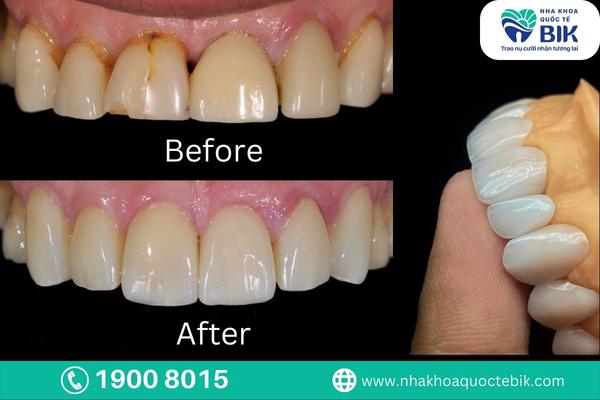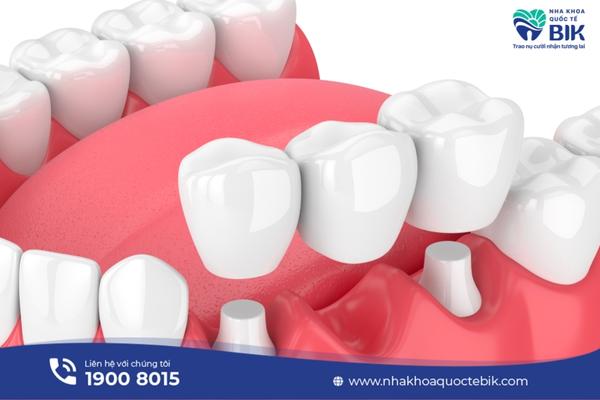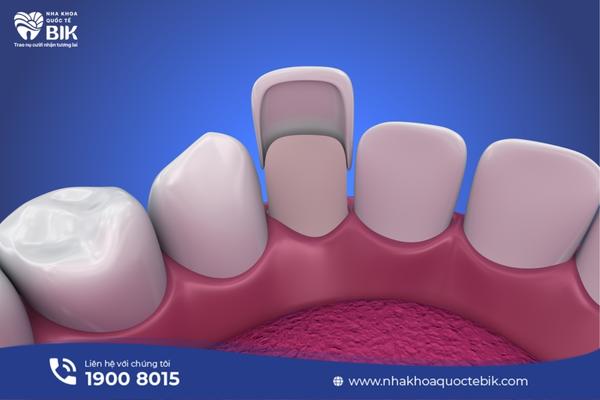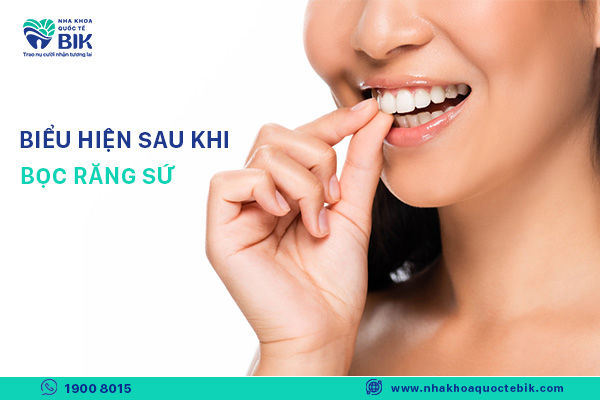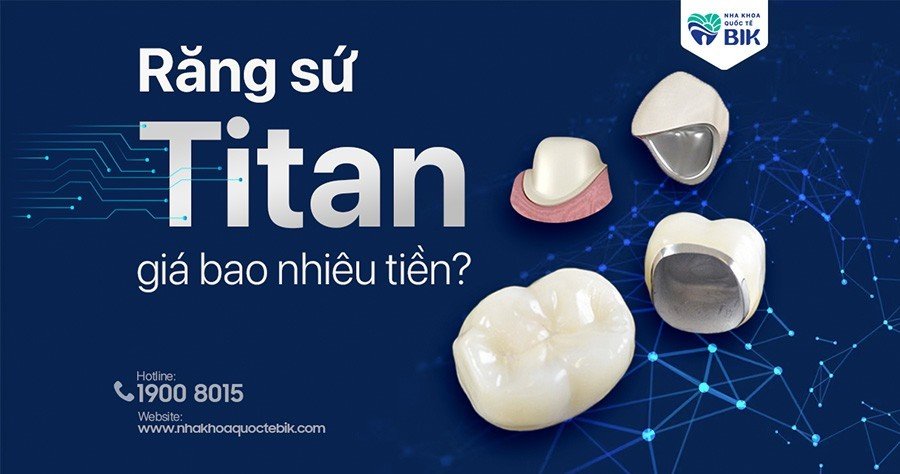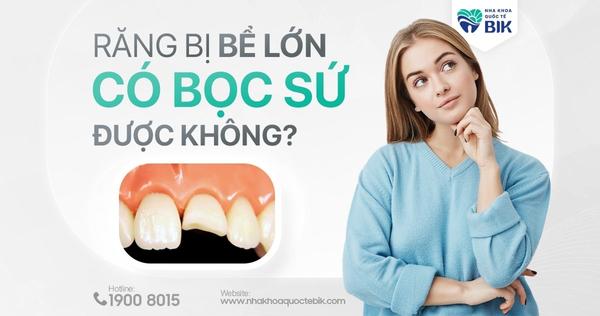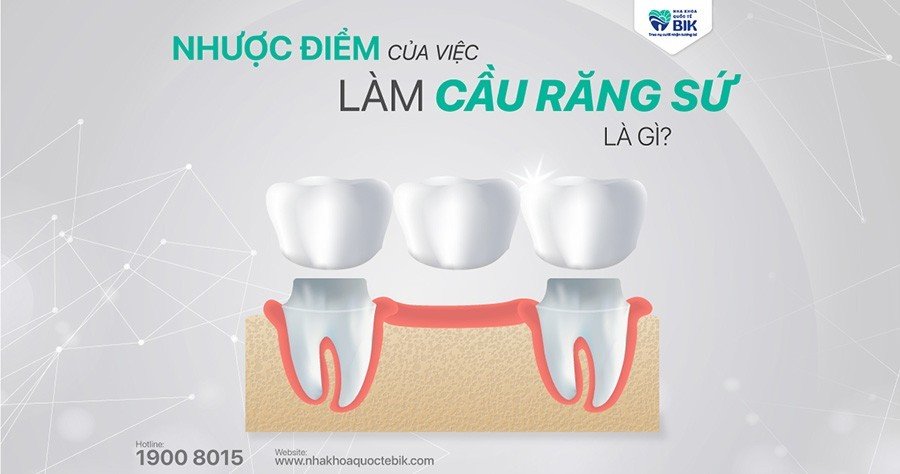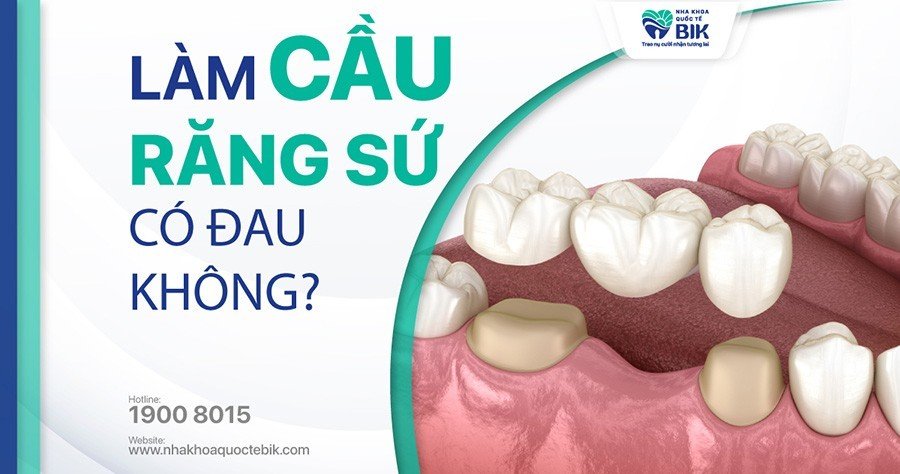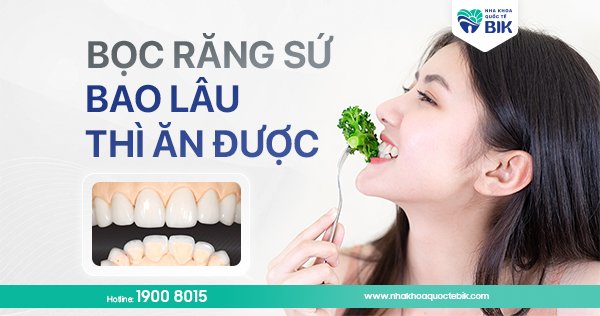
To perform porcelain crowns, the real teeth that need to be covered with porcelain will be ground down to a certain ratio to support the porcelain crown above. Although this tooth grinding has been calculated in detail and ensured safety in advance, to a greater or lesser extent, this is still an action that has a meaningful impact on the teeth. Perhaps that is why after porcelain crowns, customers are very concerned about how long it takes for porcelain crowns to be able to eat normally.
1. Can I eat and drink normally with porcelain crowns?
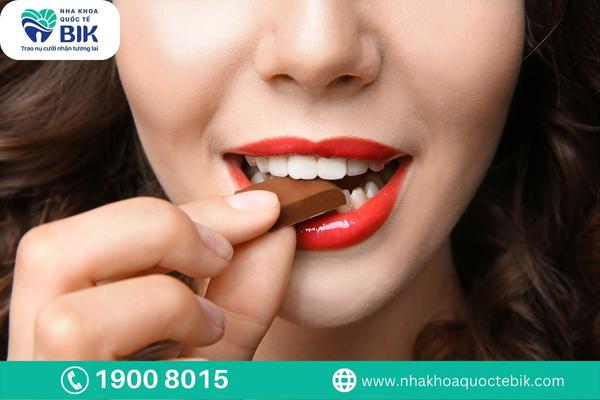
Porcelain crowns are a method of grinding the tooth stump that needs to be restored to a certain safe ratio to attach a porcelain crown on top. Porcelain crowns are crafted with the same shape, color, and size as real teeth and are personalized for each customer. Therefore, it is difficult to distinguish between fake teeth with the naked eye.
The purpose of the cosmetic porcelain crown method is to overcome problems with teeth such as chipping, cracking, misalignment, etc. as well as help restore normal chewing function. Therefore, after porcelain crowns, you can eat and drink normally.
Porcelain crowns can optimally respond to all activities such as tearing, biting, and crushing food like real teeth. In many cases, after porcelain crowns, the chewing process is even smoother than before because many types of porcelain crowns can withstand 5 times more force than real teeth.
2. How long does it take to eat after porcelain crowns?
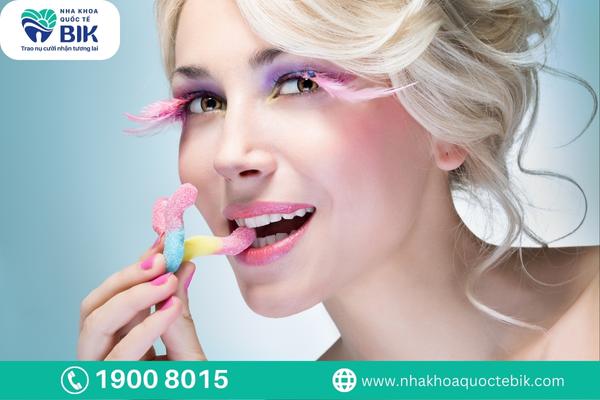
With the constant development of the most advanced techniques and technologies today, porcelain crowns are made thinner and thinner but still ensure extremely strong quality and durability. This means that the proportion of real teeth that are ground down to make a porcelain crown support will be significantly reduced, preserving the maximum amount of real tooth enamel.
In theory, tooth grinding is indicated and adhered to in accordance with the correct safety ratio, so it does not cause too much impact, so customers can eat and drink normally after porcelain crowns without having to worry too much.
In fact, teeth after being subjected to any impact need time to recover, this time ranges from 30 minutes to 60 minutes depending on each specific case as well as each person’s constitution.
After this period of time, customers can eat all kinds of foods that are good for the body and oral health. However, in the first 48 hours after crowns, the connection between the porcelain teeth and real tooth abutments is not really strong enough to withstand a large chewing force. Therefore, at this time, customers need to have a reasonable diet with soft, easy-to-chew foods, avoiding certain foods to avoid breaking the bond between the porcelain teeth and the tooth stump.
This diet should be maintained for about 1 week after porcelain crowns. In addition, you should supplement foods containing calcium, flour found in milk, cheese, sea fish, tofu, green vegetables, etc. to help teeth recover quickly and healthily.
3. What should you eat after porcelain crowns?

After completing the cosmetic porcelain crown process, customers should supplement the following foods:
3.1. Foods rich in calcium
Foods rich in calcium such as: Yogurt, fish, shrimp, nuts, crab, etc. will help teeth recover quickly and become strong. Note that you need to carefully process ingredients such as shrimp and crab to avoid using too much chewing force.
3.2. Soft, easy-to-chew foods
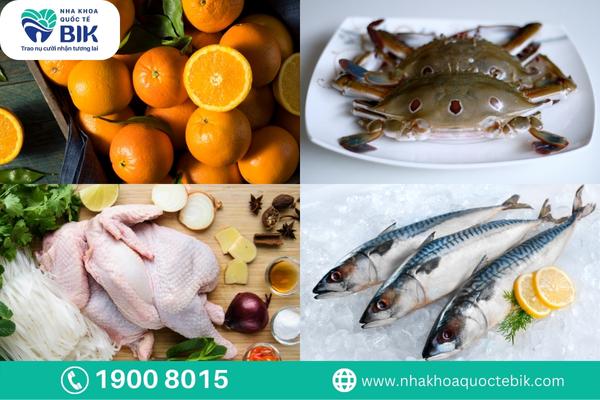
Although porcelain teeth have the same strength as real teeth, in the first week after porcelain crowns, you should only eat some soft, easy-to-chew foods to avoid breaking the porcelain teeth, which can also affect the real teeth inside.
3.3. Provide vitamin C
Vitamin C from fruits such as apples, strawberries, pineapples, guavas, oranges, etc. is a great choice to improve the condition of teeth after porcelain crowns. In addition, they also help clean and whiten teeth very effectively.
3.4. Green vegetables
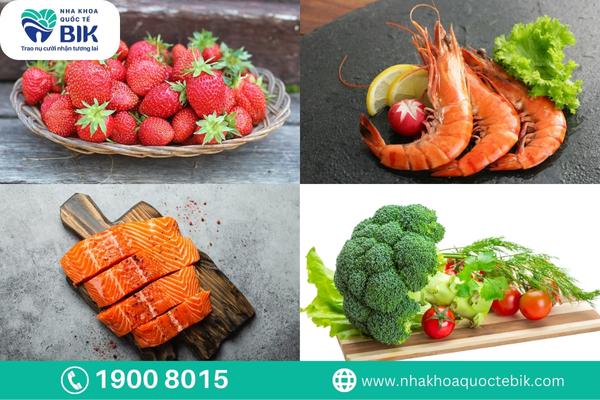
Green vegetables are an indispensable ingredient in the diet of customers after porcelain crowns. Providing enough fiber for the body to avoid energy and nutrient deficiencies leading to other health problems.
3.5. Drink plenty of water
Drinking plenty of water will help wash away plaque on teeth as well as some types of bacteria that cause periodontal diseases.
3.4. Supplementing protein
Proteins such as chicken, fish, eggs, etc. need to be cooked and carefully prepared to avoid using too much force to tear.
4. What should you avoid after getting porcelain teeth?
Foods to avoid after getting porcelain teeth are as follows:
4.1. Food that is too hot or cold
Because the real teeth inside have been ground down, they will become very sensitive to temperature. If you choose a metal ceramic crown with good heat conduction, tooth sensitivity is inevitable when eating food that is too hot or too cold.
4.2. Foods high in sugar
Even when porcelain is used, the amount of sugar remaining in the mouth when eating foods that are too sweet will also cause tooth decay.
4.3. Can you eat hard food with porcelain crowns?
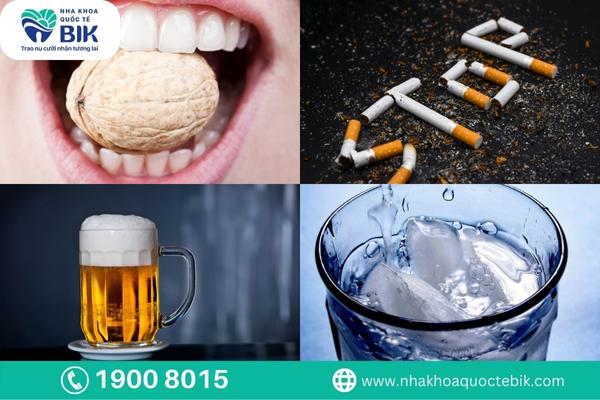
Using too much force to bite food in the first week after porcelain crowns can cause the porcelain teeth to fall off. The reason is that at this time the connection between the porcelain crown and the real tooth stump inside is not really strong enough to withstand a large impact force. Especially in the case of porcelain veneers on the front teeth, it is very easy to fall off.
4.4. Carbonated water
Carbonated water is often dark in color, which will cause the porcelain teeth to become stained and gradually lose their original whiteness.
4.5. Other stimulants
Some other stimulants such as beer, alcohol or cigarettes can also destroy the bond between the porcelain crown and the real tooth stump.
5. Things to note after porcelain crowns
5.1. Oral hygiene
Brush your teeth twice a day to avoid leftover food between your teeth, which can form tartar plaque that causes tooth decay, gingivitis, etc.
Use a soft-bristled toothbrush and dental floss instead of toothpicks to clean your teeth without damaging them.
Combine with fluoride toothpaste to help strengthen your teeth.
Rinse your mouth with diluted salt water or a specialized mouthwash after brushing your teeth.
5.2. Periodic check-ups
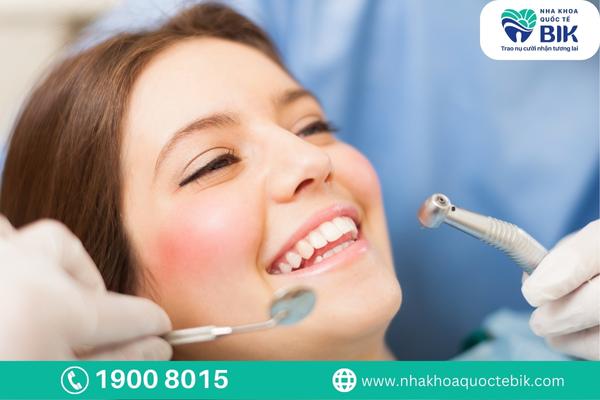
Regular check-ups every 3-6 months as prescribed by your dentist to check the compatibility and tightness of the gum line as well as to promptly detect and treat other oral problems if any.
See your dentist as soon as possible if you experience symptoms such as toothache, sensitivity, and difficulty chewing after porcelain crowns.
In case the porcelain teeth are cracked or broken due to chewing or accidents, they need to be restored from the beginning.
How long it takes to eat normally after porcelain crowns depends a lot on each person’s constitution as well as the care regimen after porcelain crowns. Customers can rest assured to eat normally when they feel the connection between the porcelain crown and the real tooth inside has begun to become stable and firm.


